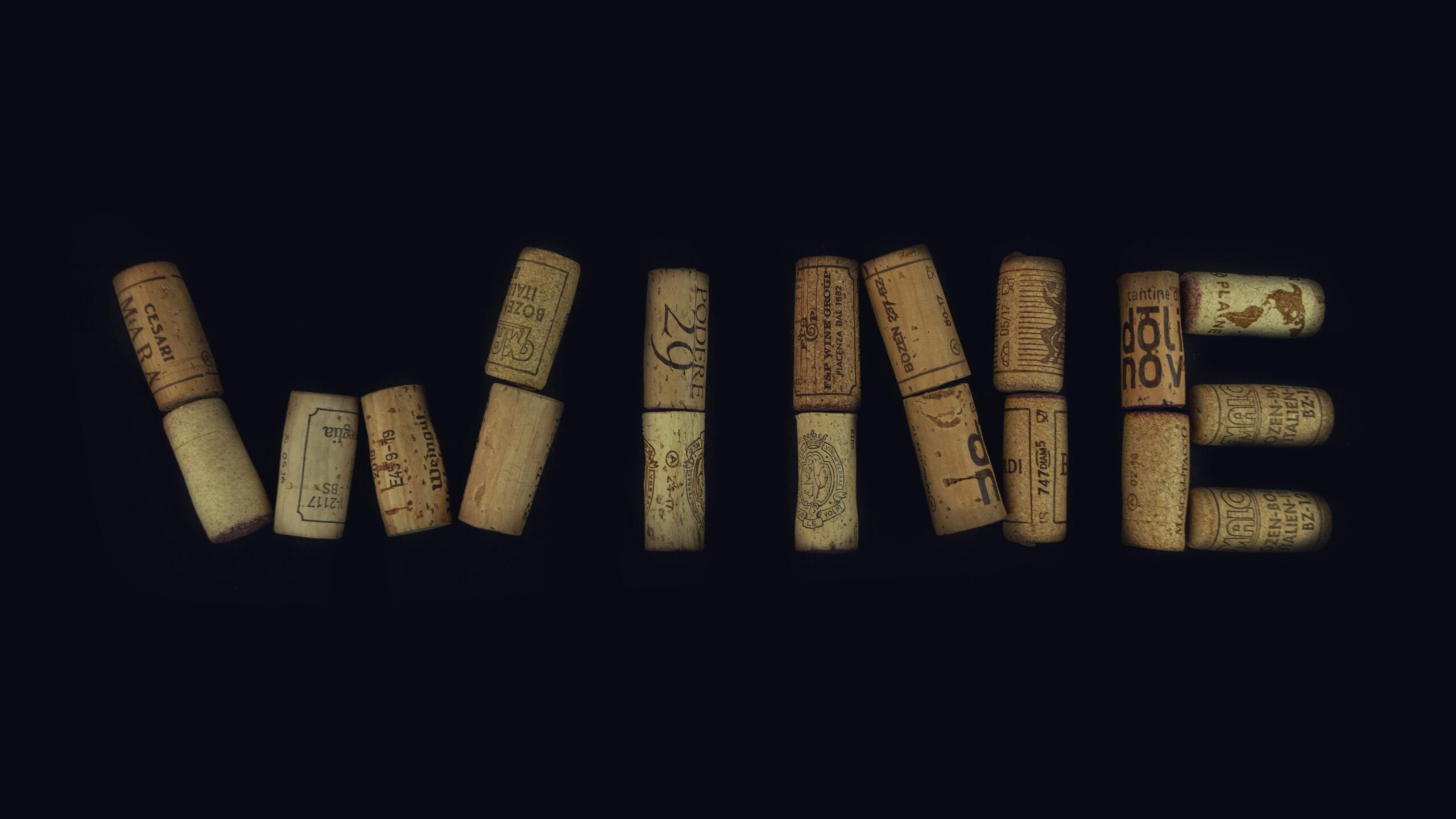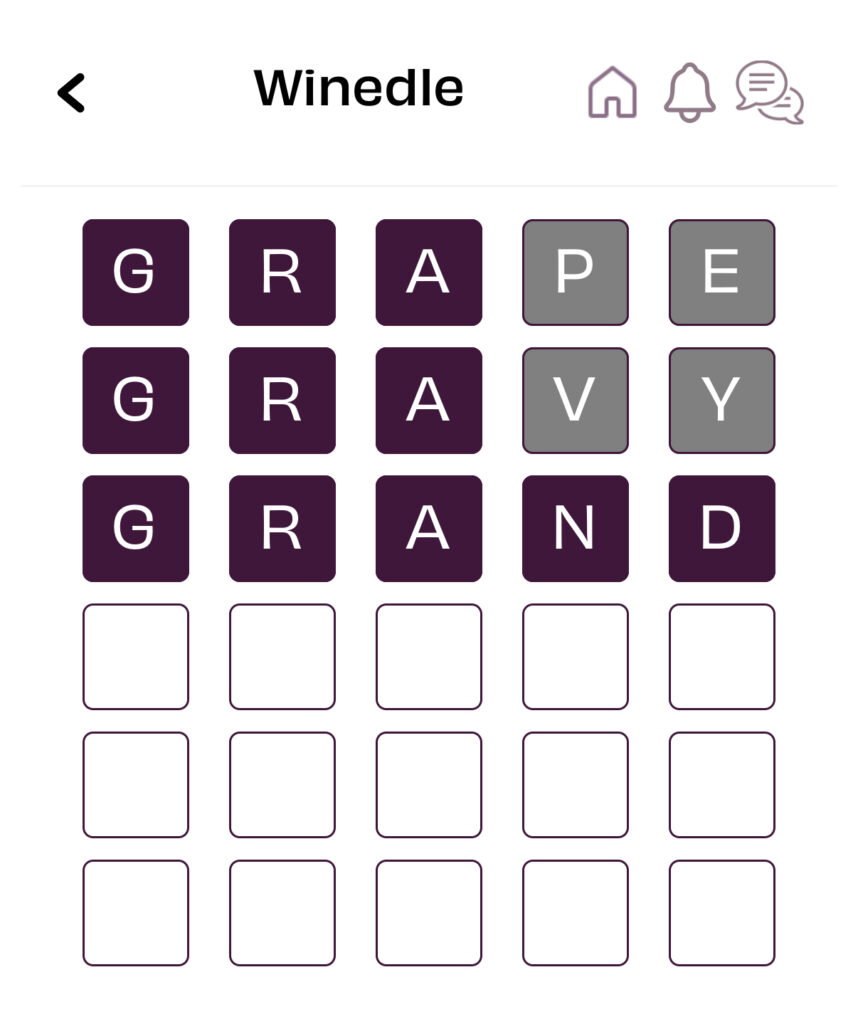
Have you ever sat at a wine tasting and heard someone toss out wine terms like “tannic” or “oaky” while you just nodded along? Don’t worry, we’ve all been there. The world of wine comes with its own wine vocabulary, and the best part is, it doesn’t have to be stuffy or complicated.
Here’s a cheat sheet of 24 common wine words:
1. Bright
Lively, zippy, and full of fresh acid.
If someone at a tasting says a wine is bright, they’re not talking about color, they mean the wine feels fresh, crisp, and vibrant thanks to its acidity. Bright wines often have citrusy or green fruit flavors and leave your mouth watering in the best way.
You might hear: “This Sauvignon Blanc is so bright, it’s got that mouthwatering acidity I love.”
2. Juicy
Fruit-packed and mouthwatering.
Juicy wines are bursting with ripe fruit (think cherries, berries, plums) and usually feel super drinkable. They’re often low in tannins and high in instant satisfaction.
You might hear: “Mmm, this Zinfandel is so juicy, it tastes like biting into a ripe blackberry.”
3. Velvet
Soft, smooth, and silky on the tongue.
When someone calls a wine velvety, they mean it glides across your palate without any rough edges. Think of it as wine that feels like luxury in your mouth.
You might hear: “This Merlot is pure velvet, so smooth I barely noticed the tannins.”
4. Flinty
Crisp with a mineral, stone-like edge.
Flinty wines have a clean, stony quality, kind of like the smell of wet rocks or struck match. It’s often found in certain whites like Chablis or Sauvignon Blanc.
You might hear: “There’s a flinty, mineral edge that really sharpens the finish.”
5. Herbal
Hints of fresh or dried herbs like thyme or mint.
An herbal wine might remind you of a walk through the garden. Fresh greens, mint, or even dried herbs. It adds complexity and depth, especially in reds and Sauvignon Blanc.
You might hear: “I’m picking up some herbal notes, like dried thyme or fresh basil.”
6. Earthy
Smells or tastes like soil, mushrooms, or wet leaves.
Earthy wines have a grounding, savory vibe (like forest floor, truffles, or garden soil). Not fruity, but definitely flavorful.
You might hear: “This Pinot has a really nice earthy note, kind of like damp leaves after the rain.”
7. Tannin
Gives wine structure and a dry, grippy feel.
Tannins in wine come from grape skins and oak. They’re what make your mouth feel dry after a sip. High-tannin wines feel firm and structured, and often need food or aging to soften.
You might hear: “It’s pretty tannic, I’d definitely pair this with a steak.”
8. Oaky
Flavors of toast, smoke, or vanilla from oak aging.
When wine is aged in oak barrels, it soaks up flavors like vanilla, caramel, spice, or even a bit of toast or smoke.
You might hear: “You can really taste the oak here, vanilla, spice, maybe a little toast.”
9. Chewy
Dense, rich, and full-bodied—you almost need to “chew” it.
Chewy wines are big, bold, and packed with texture. They’re the kind of wines you feel as much as taste.
You might hear: “This Cab is super chewy, it’s got serious depth and grip.”
10. Zesty
Crisp, vibrant, and citrusy.
Zesty wines are lively and tangy, often with notes of lemon, lime, or grapefruit. They give your palate a fun little zing.
You might hear: “I love how zesty this white blend is, it’s like a splash of citrus.”
11. Nutty
Hints of almond, walnut, or hazelnut.
Nutty notes can show up in aged wines or wines aged under oxygen. Adds a toasty, savory richness.
You might hear: “There’s a nice nutty note, kind of like toasted almond or hazelnut.”
12. Funky
Wild, natural, and sometimes a bit weird (in a good way).
Funky wines break the rules. They might smell like barnyard or taste a little wild—but that’s part of the charm. Common in natural or biodynamic wines.
You might hear: “This wine is funky, in a good, earthy, mushroomy kind of way.”
13. Spicy
Notes of pepper, clove, cinnamon, or baking spice.
Spice doesn’t mean heat, it’s more like the warm, aromatic spices you’d find in your pantry. Think Syrah, Zinfandel, or Tempranillo.
You might hear: “I’m getting lots of spicy notes, like black pepper and clove.”
14. Bready
Yeasty, toasty notes, like sourdough or brioche.
This shows up mostly in sparkling wines made in the traditional method. That toastiness? It comes from aging on the lees (yeast).
You might hear: “This Champagne smells bready, kind of like fresh brioche.”
15. Lively
Fresh, fizzy, or bright in style.
A lively wine feels energetic, with a little fizz or just a spark of freshness that keeps things fun.
You might hear: “It’s super lively, light bubbles and so refreshing.”
16. Creamy
Soft, round, and smooth, like dairy or butter.
Creamy wines coat your mouth with richness, often thanks to malolactic fermentation or oak aging.
You might hear: “This Chardonnay is so creamy, it’s almost like sipping melted butter.”
17. Weighty
Heavy and rich on the palate.
Weighty wines feel full and intense. They linger and make a strong impression, usually big reds or oaked whites.
You might hear: “Wow, this is weighty, it really fills up your palate.”
18. Petrol
Aromatic note found in aged Riesling, like gasoline (trust us, it’s a thing).
Sounds weird, but wine lovers go crazy for this distinct, diesel-y note in some aged whites, especially Riesling.
You might hear: “There’s that classic petrol note, definitely an aged Riesling.”
19. Crispy
Sharp, clean, and acidic (yes, crispy is used in wine!).
It’s like biting into a crisp green apple. Refreshing, light, and full of zip.
You might hear: “This is super crispy, perfect for a hot day.”
20. Raisin
Dried fruit notes, often in aged reds or sweet wines.
Some wines develop rich, dried fruit flavors, like raisins, figs, or prunes, especially after aging.
You might hear: “There’s a raisin-y sweetness here, makes me think of port.”
21. Pucker
Super tart or acidic, makes you pucker up.
High-acid wines can make your lips do that little pucker, especially young whites or rosés.
You might hear: “Oof, that one made me pucker, in a good, lemony way.”
22. Mellow
Soft, smooth, easy-going wine with low tannins.
Mellow wines are chill. No harshness, no high acid, no punch, just smooth sipping.
You might hear: “This red is mellow, super easy to drink on its own.”
23. Floral
Aromas of flowers like rose, violet, or jasmine.
Floral notes add elegance and lift. You’ll find them in aromatic whites and some lighter reds.
You might hear: “I’m getting a floral note, like honeysuckle or jasmine.”
24. Cherry
Classic red fruit note, sweet and tart.
Cherry is one of the most common wine descriptors, found in everything from Pinot Noir to Sangiovese.
You might hear: “Tastes like ripe cherry with a hint of spice, love it.”

Want to Learn Even More Wine Terms? 
Download the Winelikes App and dive into Winedle—a daily wine word game made for wine lovers. Each day, you’ll guess a 5–7 letter wine-focused word, learn what it means, and challenge your friends to do the same. Submit your own tricky terms to stump your peers and earn points for serious bragging rights. From mastering words like buttery and tannin to tossing in your own quirky wine slang, Winelikes makes learning wine vocabulary fun, fast, and social.
Download today on the Apple App Store or Google Play!



